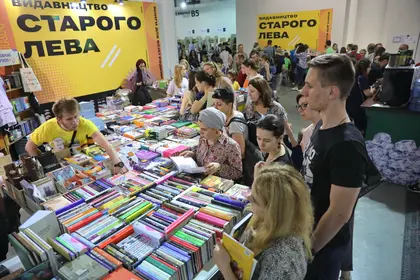For a journalist covering Ukraine, it can often feel like the country has lived through a century of elections, conflicts, revolutions and social changes in its 29 years of independence from the Soviet Union.
That feeling isn’t just confined to the post-independence period.
For centuries, Ukraine has been a crossroads where Europe met the Middle East and Asia. It has been inhabited by different peoples, controlled by different states, seen important cultural innovations and experienced horrendous cataclysms.
Sound confusing? It can be.
To get a handle on Ukraine and to better understand its history and culture, the Kyiv Post recommends checking out these 10 books. They include both histories and fiction. The list is not exhaustive and it admittedly skews toward Western authors, but it is a good jumping-off point for an English-speaking reader.
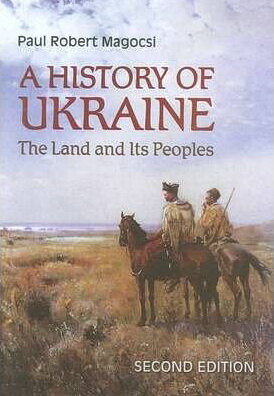
1. A History of Ukraine: The Land and Its Peoples
By Paul Robert Magocsi
Published by University of Toronto Press (2010)
Roughly the size of a brick and clocking in at nearly 900 pages, Paul Robert Magocsi’s history of Ukraine is likely the definitive, single-volume book on the subject.
It begins before the foundation of the Kyivan Rus and continues up to the present day. Unlike previous authoritative histories, this one offers a multicultural perspective on Ukraine’s past, with sections dedicated to Jews, Russians, Poles, Tatars and more.
A History of Ukraine also bears the distinct honor of being used as a textbook in a course taught by Serhii Plokhy, a professor of Ukrainian history at Harvard University. If you want the most in-depth history of this country, this is the book for you.
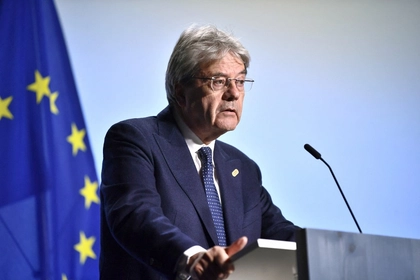
G7 Deal on $50 Billion Ukraine Loan Seen in October, Gentiloni Says
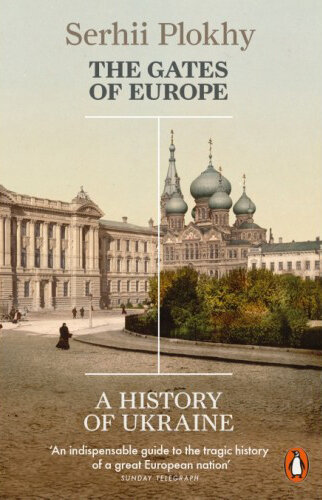
2. The Gates of Europe: A History of Ukraine
By Serhii Plokhy
Published by Basic Books (2017)
This acclaimed book, written by the leading historian of Ukraine, offers a more succinct survey of the country’s history. It is also perfect for a reader whose interest in Ukraine emerged from the EuroMaidan Revolution that toppled President Viktor Yanukovych and Russia’s annexation of Crimea and invasion of Donbas in 2014.
In Gates of Europe, Plokhy sets out to explain the historical events that led — directly or indirectly — to the crisis in 2014. He answers or contextualizes questions like what differentiates Ukrainians and Russians and who should control Crimea, which have gained public attention in recent years.
Plokhy’s route is not short. Gates of Europe is a trip through all of Ukraine’s history, with an eye to the formation of Ukrainian national identity and the cultures that influenced it. Whoever completes this journey will come out feeling well-informed about Ukraine.
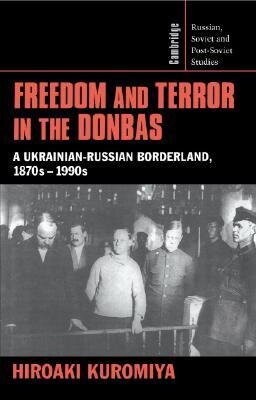
3. Freedom and Terror in the Donbas: A Ukrainian-Russian Borderland, 1870s‑1990s
By Hiroaki Kuromiya
Cambridge Russian, Soviet and Post-Soviet Studies (2003)
This is a pricey academic book, so readers would be wise to seek it out at a library. Still, it merits inclusion on this list for its detailed, engaging account of the industrial and social development of Ukraine’s eastern Donbas, where a war has raged since 2014.
Originally published in 2003, Freedom and Terror predates the conflict. Still, a reader cannot help feeling like the book explains the war’s origins.
An erudite scholar and lucid writer, Kuromiya offers a window into how the Donbas was settled, the region’s industrialization in the 19th century and its transformation from a chaotic place resistant to political ideologies to a highly Sovietized society. The author focuses on the violence and terror experienced by the local people and their role in the region’s transformation.
For anyone who wants to understand the Donbas, Freedom and Terror is a good place to start.
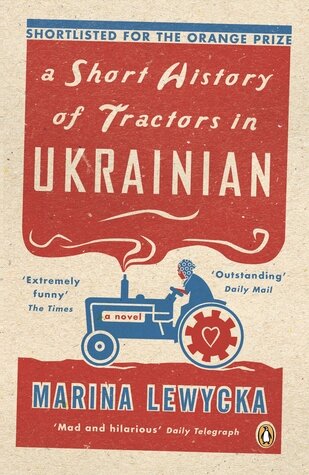
4. A Short History of Tractors in Ukrainian
By Marina Lewycka
Published by Viking Press (2005)
In this laugh-out-loud novel, Ukrainian-British author Lewycka offers a comical look into the divides that separate the Ukrainian diaspora and the motherland.
After her widowed 84-year-old father marries a much younger immigrant woman from Ukraine, a Ukrainian-British sociology professor must team up with her estranged sister to protect their dad from his gold-digging spouse.
Ukrainian novelist Andrei Kurkov criticized A Short History of Tractors for peddling in unsympathetic caricatures of Ukrainians. But Kurkov’s criticism ignores the fact that these stereotypes are, unfortunately, widespread. Lewycka’s novel confronts them head on.
Ultimately, A Short History offers a humorous, but humane look at the diaspora and its relation to Ukraine. Elderly Nikolai’s passion for his younger bride reflects his longing for his youth in Ukraine, the country that he lost, and a place that no longer exists as he remembers it.
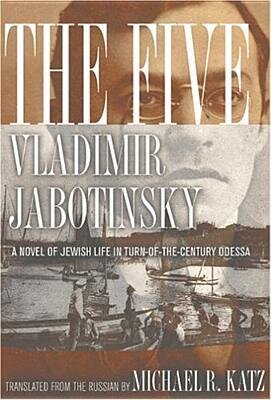
5. The Five: A Novel of Jewish Life in Turn-of-the-Century Odessa
By Vladimir Jabotinsky, translated by Michael R. Katz
Published by Cornell University Press (2005)
Much has been written about Odesa (“Odessa” in Russian), a Ukrainian city whose mythology extends far beyond its borders, both in the countries of the former Soviet Union and the West. Odesa also played a key role in Ukrainian and Eastern European Jewish history, serving as a Mecca for Jews seeking freedom from the discriminatory laws of the Russian Empire, an escape from the restrictive religious mores of their shtetls and a path to integration into Russian society and European culture during the 19th and early 20th centuries.
Vladimir Ze’ev Jabotinsky, the founder of Revisionist Zionism and the grandfather of Benjamin Netanyahu’s Likud party in Israel, was born into this secular, integrated and ambitious Jewish milieu in Odesa, a city he would romanticize long after he had left it.
Originally published in 1936, The Five tells the story of the five Milgrom children in turn-of-the‑20th-century Odesa and their tragic fates. The novel is a work of fiction with strong autobiographical elements (the narrator is essentially a young Jabotinsky), but offers what often feels like a panoramic view of Odesa society at the turn of the 20th century.
At its core, The Five is the story of people caught up in the tumult and cataclysms of the era: tradition, modernity, antisemitism, nationalism, assimilation and revolution.
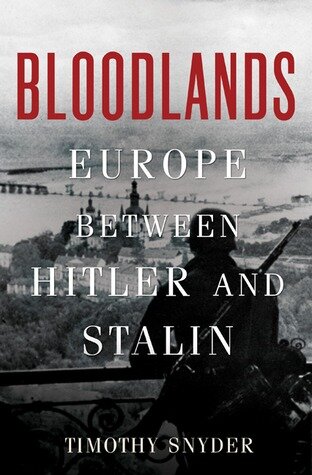
6. Bloodlands: Europe Between Hitler and Stalin
By Timothy Snyder
Published by Basic Books (2010)
When Timothy Snyder, a Holocaust historian, is appearing on the Daily Show to talk about tyranny, you know something has gone wrong in American politics.
But long before Snyder was a voice in the anti-Donald J. Trump resistance, he was researching and writing about mass murder and genocide in central and eastern Europe. Bloodlands, likely his most famous work, presents the region’s bloody history from a new perspective. Snyder treats Nazi German dictator Adolf Hitler and Soviet dictator Josef Stalin’s atrocities against civilians as part of a single narrative. He stresses that, despite their different ideologies, the two tyrants together killed over 14 million civilians during a span of just over a decade. Sometimes, they also collaborated, as during the joint Nazi and Soviet occupation of Poland.
As a history, Bloodlands helped to draw American attention to Stalin’s atrocities against civilians — particularly in Ukraine — which had long been overshadowed by Nazi mass murder. It also emphasized the degree to which much killing in the Nazi Holocaust took place outside concentration camps. For students of Ukraine, that makes Bloodlands a must-read.
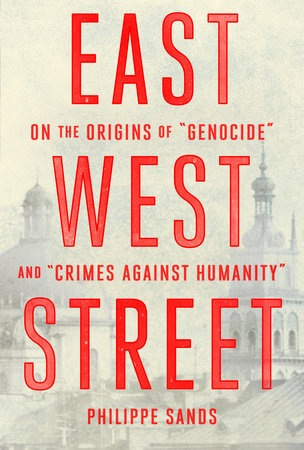
7. East West Street: On the Origins of “Genocide” and “Crimes Against Humanity”
By Philippe Sands
Published by Vintage (2017)
Written by a human rights lawyer, this acclaimed work of non-fiction tells three stories.
The first is that of the author’s grandfather, a Jew from Lemberg, today’s Lviv. The second is the story of Raphael Lemkin and Hersch Lauterpacht, the men responsible for the concepts of genocide and crimes against humanity, respectively. The third story is that of Hans Frank, Hitler’s personal lawyer, the man responsible for the murders of the families of Lemkin, Lauterpacht and Sands’ grandfather.
What emerges is a complicated, tragic and deftly told story of Lviv, its people, the Holocaust and birth of international law and the Nuremberg trials.
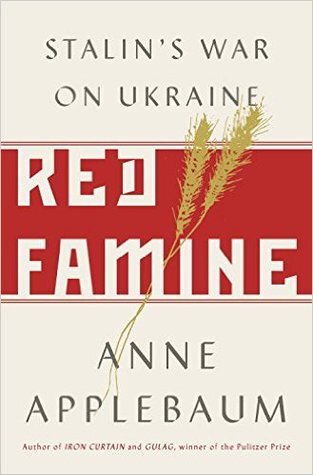
8. Red Famine: Stalin’s War on Ukraine
By Anne Applebaum
Published by Doubleday (2017)
Red Famine is not the only acclaimed book on the Holodomor, the 1932–1933 Soviet man-made famine that killed millions of Ukrainians. But it is the most recent, benefitting from previous scholarship on the subject and offering among the fullest pictures of the atrocity, widely regarded as a genocide in Ukraine.
Applebaum argues that the Ukrainians killed in the Holodomor were no coincidental victims of poorly planned Soviet collectivization policies. Rather, Stalin targeted them to break the resistance of the rebellious Ukrainian population. It’s not a new argument, but it is an important one. Applebaum makes it convincingly, recounting in great detail Stalin’s merciless war of starvation on Ukraine.
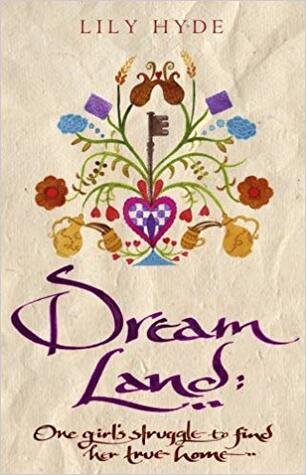
9. Dream Land
By Lily Hyde
Published by Walker Books (2017)
Crimean Tatars have been some of the most steadfast supporters of Ukraine since Russia annexed their homeland in 2014. That was just the latest event in their long history of persecution at the hands of the Russian Empire, the Soviet Union and now the Russian Federation.
During World War II, Stalin deported the entire Crimean Tatar population from the Crimean peninsula to Central Asia. They were only allowed to return to their homeland during Perestroika and after the Soviet collapse. Many who returned faced resistance from the Slavs who had taken their place in Crimea.
In the young adult novel Dream Land, former Kyiv Post journalist Lily Hyde tells the story of Safi, a 12-year-old Crimean Tatar girl, as her family leaves Uzbekistan to return to the homeland from which her grandfather was deported. Their return is anything but smooth. They face official resistance, discrimination and even outright hostility from other residents of Crimea.
Hyde, an expert on Crimea, tells the oft overlooked story of the Crimean Tatars and their return from exile in a narrative that will entice readers of all ages.
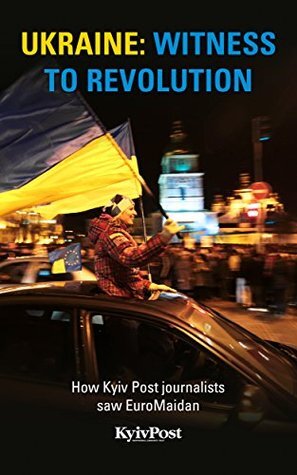
10. Ukraine: Witness to Revolution
By the Kyiv Post
Published by Mohammad Zahoor (2016), available on Amazon.com
This affordably priced ebook provides readers with a detailed, but still concise account of the 2013–2014 EuroMaidan Revolution, which overthrew Ukraine’s corrupt president and helped to usher in a new era of reform and European integration in the country. Today, Ukraine is still struggling to live up to the promises of the revolution as it fights a war against Russian-backed militants in the Donbas.
EuroMaidan was a defining moment for Ukraine, Europe and international affairs. Beyond Ukraine’s borders, the shockwaves of the revolution can still be felt in Moscow, Brussels and Washington. And the revolution remains in the background of many stories that dominate the news cycle today — whether the 2020 presidential election in the United States or the Belarusian protests against dictator Alexander Lukashenko.
Witness to Revolution weaves the accounts, memories and essays of Kyiv Post journalists who lived through and reported on the revolution into its comprehensive account of EuroMaidan.
If you want to understand what happened in Kyiv in 2014, this book is an important starting point.
You can also highlight the text and press Ctrl + Enter


